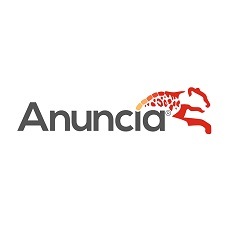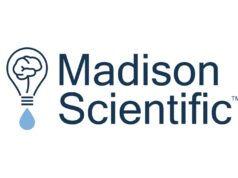 Anuncia Medical has announced the successful US commercial launch of the ReFlow mini flusher—a second-generation device for the treatment of hydrocephalus. According to a company press release, neurosurgeons in the USA and, soon, internationally will now have a new option to reduce the impact of hydrocephalus by providing better access to potentially life-saving therapy for patients.
Anuncia Medical has announced the successful US commercial launch of the ReFlow mini flusher—a second-generation device for the treatment of hydrocephalus. According to a company press release, neurosurgeons in the USA and, soon, internationally will now have a new option to reduce the impact of hydrocephalus by providing better access to potentially life-saving therapy for patients.
Data recently published in the journal Pediatric Neurosurgery on the first-generation ReFlow device suggests that ReFlow prophylactic use—designated as a US Food and Drug Administration (FDA) Breakthrough Device indication that Anuncia intends to further explore in future clinical studies—may reduce the high rate of shunt malfunctions due to catheter occlusions and associated repeat revision brain surgeries.
The just-launched second-generation ReFlow mini flusher is FDA-cleared for use in patients living with hydrocephalus or similar conditions. Its reduced size and profile are intended to better support a broader hydrocephalus patient population, from infants to older adults.
Used in line with any shunt system brand, the patented ReFlow mini flusher is “uniquely designed” to flush patients’ cerebrospinal fluid (CSF) back into the ventricular catheter to maintain, restore or increase hydrocephalus shunt flow with “just a simple push” of the flusher’s soft dome located beneath the patient’s scalp, Anuncia’s recent press release details. Non-invasive flushing with the ReFlow mini flusher does not interfere with shunt flow regulation and can be performed in-clinic by trained clinical staff, or anywhere by a trained patient or caregiver, as directed by the treating neurosurgeon, the release adds.
Since the ReFlow mini flusher became available earlier this month, multiple leading centres across the USA have successfully implanted the technology, and patients are already using the device to manage their chronic hydrocephalus. Beyond the USA, Anuncia is also actively seeking opportunities to assist neurosurgeons in regions where treating the condition remains challenging. Notably, Anuncia’s release states, international news organisations are currently covering a public health crisis in Uganda, highlighting how a bacterial outbreak has led to a new surge in hydrocephalus cases, and the company is seeking strategic partners who share the belief that the ReFlow mini flusher could improve the lives of undermanaged patients.
“Even in developed nations, the need is clear for a device like the ReFlow mini flusher that can deliver access to non-invasive therapy wherever the patient is,” said Ramin Eskandari (Medical University of South Carolina, Charleston, USA). “In my experience with the Gen 1 ReFlow device, this technology may decrease hydrocephalus shunt malfunction due to ventricular catheter occlusion. I am optimistic that the ReFlow mini has the potential to do the same in other parts of the world where there is a paucity of neurosurgical care and patients can die within hours to days of having a shunt malfunction. ReFlow prophylactic flushing for shunted patients could be game-changing like the surgical techniques of endoscopic third ventriculostomy (ETV) and choroid plexus cauterisation (CPC), pioneered by luminaries like Dr Benjamin Warf, have been to avoid shunting. Armed with new tools like ReFlow, I am excited to see how we can reduce the hydrocephalus public health crisis globally.”
“Hydrocephalus represents a significant global health challenge across various regions,” added Albert Isaacs (Nationwide Children’s Hospital, Columbus, USA). “Shunt malfunction, a critical complication, poses a potentially fatal risk, highlighting the importance of exploring viable alternatives, including ETV/CPC—especially in resource-constrained areas situated far from potential surgical facilities. Substantial progress has been achieved in addressing this issue in Uganda and other sub-Saharan African countries. Nonetheless, a considerable task remains ahead, particularly given the recent public health crisis related to hydrocephalus reported in Ethiopia and other African nations.”









